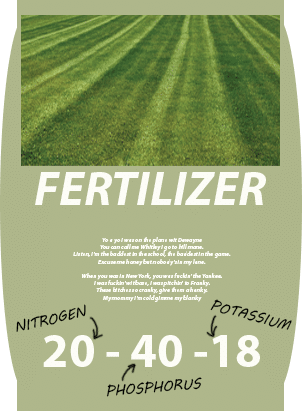Fall is sort of the unsung savior of the landscaping world. It’s one last hurrah for your landscape before the winter blankets it in snow, and it marks the end of heat and droughts during the summer. For those last weeks in September, October and November, your lawn and plants can thrive again. You may have heard it said that fall is the best time for planting, and it’s true: the mild weather makes it ideal for planting new shrubs and trees or seeding a new lawn, since lingering warm days and increased precipitation are key for new plant growth. In that same vein, it’s also the ideal time to fertilize.
Why
Fertilizing during the fall benefits your landscape in a variety of ways. In the line of instant gratification, it helps your lawn recover from heat-induced dormancy from the summer, and keeps your shrubs and perennials vibrant just a bit longer. But as usual, it’s what’s going on below the surface that counts.
Fertilizing your lawn promotes blade and leaf growth, which is important, as plants make food in these areas. But it also stimulates root growth, which is essential for the long-term life of the plant. Every plant benefits from a deep root system. Stimulating this root growth in the fall will help your plants and lawn stay established during the winter.
When
The next question is of course, when. For your lawn, we recommend two fertilizer applications. Once in the first half of September will kickstart it again after summer dormancy, especially for cool-season grasses, like Kentucky Blue or Rye, which thrive in the fall anyways. Helping your lawn on recover fully from the heat is important at this time of year, as you don’t want you lawn entering the winter under stress.
We also recommend applying fertilizer in the late fall, toward the end of October or early November. This application will catalyze one last frenzy of root growth and really give your lawn some staying power through the cold months.
As for shrubs and trees, a late fall application is best for them too. Again, stimulating root growth before winter will help them survive the extreme weather ahead.
For perennials, stick to an early fall application if you want to get a few more weeks out of them. They’ll also benefit from increased root growth.
Which
Run of the mill fertilizers will do the job, but only if you know a little about soil. Most fertilizers come in bags with three numbers on them, indicating their levels of nitrogen, phosphorous and potassium, three key substances for helping plant growth. Nitrogen stimulates leaf growth, phosphorous stimulates root growth, and potassium promotes overall health by protecting against disease.
Unfortunately, these fertilizers have a tendency to provide an unnecessary amount of each chemical to your lawn. It’s also important to note that while it promotes root growth, phosphorous is banned in New York State. Therefore, fall blend fertilizers – usually higher in phosphorous – aren’t an option.
An alternative to these is an organic option, like Holganix. Holganix is classified as a “biological meta-catalyst” which sounds confusing, but actually just means it’s a fertilizer with an element that helps plants uptake the ingredients more easily. Rather than inundating your lawn with a chemical, it provides less of the chemical but makes your lawn more readily accepting. That means less chemical waste, at no cost to the health of your lawn.
Results
So, deeper root systems sound great on paper, but does it really make a difference? You’ll see in the spring. Lawns that are fertilized twice in the fall have an earlier green up, and regular fertilizing throughout the year makes for a healthier (and greener!) lawn in general. The same logic applies to your shrubs, trees and perennials: giving them a nutritional boost before winter helps them bounce back vigorously in the spring.
Recap
- Fertilize your lawn and plants to stimulate root growth, which will help your plants survive the winter and recover earlier in the springs.
- Apply fertilizer to your lawn once in the early fall to recover from summer dormancy, and once in the late fall to prep it for winter.
- Fertilize perennials in the early fall for extended life.
- Fertilize trees and shrubs in the late fall to give them a boost before the winter.
Any questions? Drop us a line!


